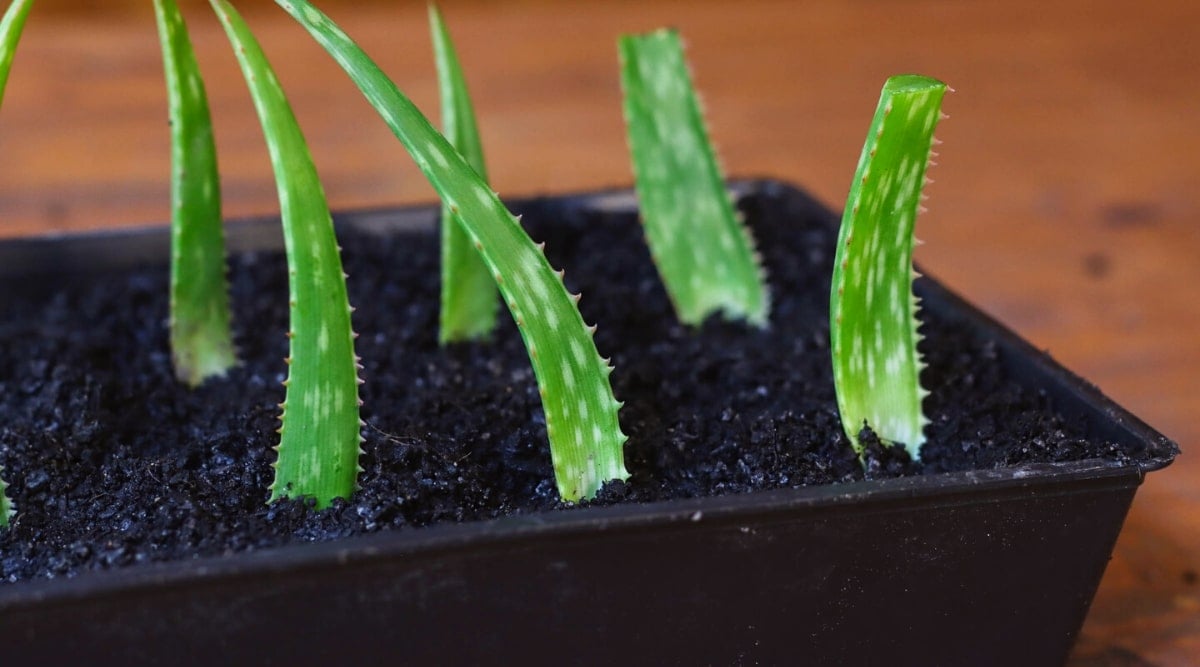Growing aloe vera is not just about aesthetics; it is about enriching your space with this resilient, medicinal plant. Aloe can provide significant health benefits, and it is surprisingly accessible to propagate from cuttings. While most are familiar with cultivating aloe through offsets, cuttings serve as an equally effective and often more rewarding method. This guide will enlighten you on how to successfully propagate aloe cuttings, transforming your perspective on plant care and nurturing.
Recognizing the Right Aloe Varietals for Propagation
The journey to successful aloe propagation begins with the selection of appropriate plant species. Aloe vera, the most widely cultivated variety, is particularly noted for its remarkable healing properties. However, other members of the aloe family, such as Aloe aristata and Aloe nobilis, are aesthetically pleasing and readily amenable to propagation as well.
Understanding the unique attributes of each species is pivotal. Aloe vera, with its fleshy, serrated leaves, boasts a rich gel that is a boon for skin health. On the other hand, varieties like Aloe aristata present a rosette of short, spiky leaves, lending an exotic appeal. Choosing a species that resonates with your aesthetic appeal and care capabilities is the first step towards fruitful propagation.
Choosing the Perfect Cutting
The selection of a healthy cutting is integral to successful propagation. Look for mature leaves that are at least 6 inches long; these should appear robust, free from blemishes, and show an inherent vibrancy. Inspect the base of the leaf closely—any signs of rot or disease can diminish your chances of success.
When harvesting the cutting, employ a clean, sharp knife to avoid damaging the plant. Always make your cut at a 45-degree angle. This technique not only promotes drainage but also encourages the cutting to establish roots more effectively. It is advisable to allow the cut end to dry for 24 hours; this process, known as “callousing,” reduces the risk of rot once planted.
Preparing the Ideal Growing Medium
The soil you choose plays a pivotal role in the propagation success of your aloe cutting. Opt for a well-draining soil mix. A combination of potting soil, perlite, and coarse sand can replicate the natural arid environment where aloes thrive. The perlite adds aeration, while coarse sand assists with drainage.
Before planting, ensure that your container has adequate drainage holes. The use of terracotta pots is advantageous; they absorb excess moisture, preventing overwatering. Once your soil medium is prepared, you are ready to plant your cutting.
Planting the Cutting
Gently place the dried cutting into the soil and bury it about an inch deep. Ensure that you keep the cut edge above the soil layer while firmly packing the medium around it. This allows the cutting to remain stable while providing the necessary support for root development.
After this, refrain from immediately watering the cutting. Instead, lightly mist the soil to initiate moisture retention without saturating it. Give your cutting a couple of days to acclimate to its new environment, which will minimize the shock of transplantation.
Creating an Optimal Environment for Growth
For a cutting to root effectively, it requires a hospitable environment. Place the container in a location that receives bright, indirect sunlight; direct sunlight might scorch the cutting. An east-facing window often fits the bill perfectly.
Temperature plays an essential role in the propagation process. Aloe thrives in temperatures ranging from 60°F to 75°F, mimicking the warm climates of its native habitat. Additionally, a humidity level around 40-50% will further enhance the growth prospects. Utilizing a humidity dome can be beneficial; however, ensure that it does not inhibit airflow.
Watering Techniques to Encourage Root Development
Watering is a critical aspect of nurturing your cutting. Overwatering is a common pitfall; while aloe plants need moisture, they also require a dry period to flourish. The general rule is to wait until the top inch of soil is dry before watering.
When you do water, ensure it is thorough enough to seep through the drainage holes. This method encourages the roots to stretch downward in search of moisture, promoting stronger root systems.
Recognizing the Signs of Successful Propagation
Patience is key during the propagation process. However, certain indicators will signal that your aloe cutting is on the path to thriving. Within a few weeks, you may notice tiny roots emerging through the drainage holes or new growth appearing at the tip of the cutting. These signs are indicative of a successful transition from cutting to plant.
Over the next couple of months, you might observe leaf expansion. If your aloe cutting has developed new leaves that appear robust and healthy, it’s a promising sign.
Transplanting Your Aloe: From Cutting to Pot
Once your cutting has established a healthy root system and shows signs of robust growth, it is time for transplanting. Carefully remove the plant from its initial container and gently shake off excess soil. Be cautious not to disrupt the roots too much during this transfer.
Choose a larger pot that accommodates potential growth, using a well-draining soil mix as previously mentioned.
Nurturing Your Aloe Plant Post-Transplantation
After transplanting, place your aloe in a well-lit area, maintaining the same care principles. Monitor your watering regimen, allowing the soil to dry out between watering sessions. With patience and care, your aloe will flourish, and in time, you will enjoy its many benefits.
In conclusion, propagating aloe cuttings opens doors to a rewarding hobby that connects you to nature. Once you witness the life cycle manifest before your eyes, it shifts your perspective on plant care entirely. With the right knowledge, tools, and dedication, anyone can embark on this nurturing adventure. The possibilities are as vast as your imagination—and all it takes is a single cutting to start your journey.





Leave a Comment